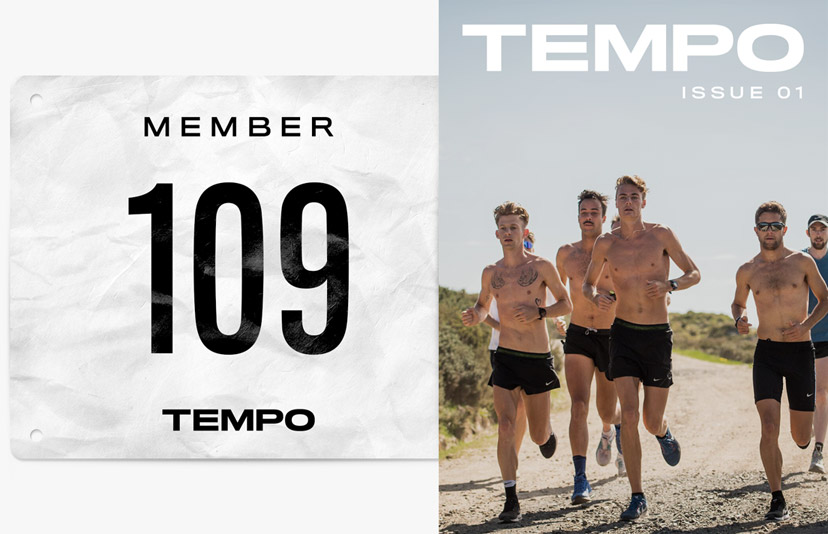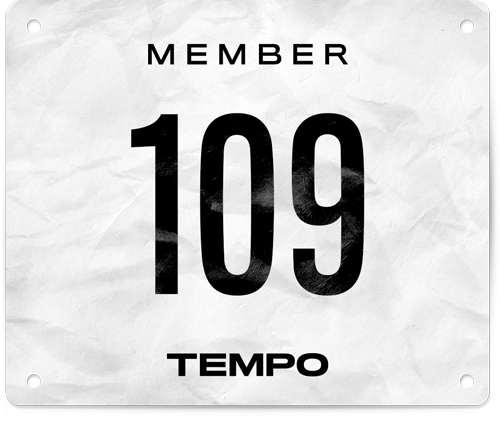Performance
Liz Clay: Evolution
An overnight success years in the making
Editor's Note: This article is brought to you by PUMA. Liz wears the Puma Deviate Nitro, which brings new technology to the PUMA Running catalogue through the use of a NITRO Foam midsole, Pumagrip Rubber and Carbon Fibre Innoplate for energy transfer. You can cop the NITRO product range here.
Sport is seasonal, with familiar periods of intense racing interspersed with lulls for planning and recovery. Just as seasons are cyclical, so are the series of decisions athletes face, such as deciding on a season schedule or gearing training toward a national championship.
These cycles can at times become all-consuming. They can blind an athlete to the possibility of change. Or make it an unnerving prospect to admit a carefully laid-out plan has not worked out. Liz Clay knows this. She’s been there.
In 2016, Clay was a good 100-metre hurdler. The problem? She wanted to be great. Five years later, this elicits a chuckle in a mid-afternoon Zoom interview. Good, but not great – it’s a tiresome trope in sports.
The series of decisions that led the 26-year-old Clay to an undefeated period of racing from January 12, 2020, to July 17, 2021, a national title in April 2021 and on to a 12.71 run in the Olympic semi-final in August might appear logical in hindsight. But there are a lot of ‘what ifs’.
What if Clay hadn’t moved to the Gold Coast to work with coach Sharon Hannan?
What if she hadn’t trained overseas in 2018?
What if she hadn't brought in expert sprints coach David Reid to guide her gym programming?
Clay laughs. Relaxed in demeanour, she’s enthusiastic as she explains the context for each of the decisions that led her to 10th place at the 2020 Tokyo Olympic Games.
SETBACKS AND SELF-BELIEF
Early in her career, each time Clay was offered an easier route than the one she'd chosen, or when serious injury threatened to throw her off her path, she held firm, even when others doubted her course. Quitting never crossed her mind.
“I knew what I was capable of, I didn’t care who thought that I was actually capable. I just knew that I could do it. I knew there was something more there. I just had such belief in myself.
“At my 21st, I told everyone that I was moving to the Gold Coast in two weeks. Then I moved. I’m such an impulsive person anyway, I didn’t even think about it, I just did it. There was no thought process – I said, ‘I can make it work, I’ll just do it.’”
“You are not going to get through the heat at an Olympics if you don’t have some type of ‘I deserve to be here, I’m unbeaten, I’m national champion’."
Liz Clay
Clay’s 2016 move to the Gold Coast saw immediate results: a personal best of 13.36 under the tutelage of Sharon Hannan. Hannan was no stranger to personal bests, having coached Australia’s two fastest ever 100m hurdlers. She wouldn’t better this time until 2020.
“Every year there was something that happened, like a big injury. I guess maybe I blamed that for holding me back each year.”
Examples of these setbacks include a 2017 World University Games berth marred by a severe illness that saw Clay quarantined in the games village. The following year she ‘choked’ at the Commonwealth Games trials. As determined as ever, she didn’t let it phase her.
“I just attributed those challenges to the learning process I was going through. Learning what it takes to be a full time athlete and how to deal with national championship pressure, all while under a new coach. I was still working it all out.”
“Later that year I had a massive foot injury. I thought, ‘All right, I’ll get over this and move onto the next season.’”
But this three-year period without race improvement didn’t reflect Clay’s growth as an individual, as would soon become apparent.
MECHANICS AND A BREAKTHROUGH
Clay draws me back to a 2018 trip to the United States to visit close friend Ella Nelson and train alongside the Olympic sprinter at the elite training centre ALTIS.
“That was like a lightbulb month for me. I realised I had no sprint mechanics – I was really weak. My training age was so old, but body-wise I was so underdeveloped for a 23-year-old sprinter … I knew that was going to be such a long process to be able to go from someone who runs so back-side that I just honestly don’t go anywhere to someone who can run 11.7–11.6.”
In 2019, a freak accident before the national championships saw Clay’s season derailed once again. Clay brought in a new gym coach, David Reid, the director of performance at Emmanuel College. Reid insisted on quantifying Clay’s gym programming.
“We started this cycle of ‘Okay, we test every four weeks. You’re slow, you’re weak – so we test your flying 30 and your gym stuff every four weeks. If you’re not getting faster and stronger, then we try something else.’
“He was kind of like the missing piece of the puzzle.”
Years of work on the Gold Coast gradually led to a fundamental change in Clay’s sprinting speed. Proof finally came on a cold night in Melbourne, a 12.94 run confirming her unwavering self-belief as she broke the 13-second barrier. The run rocketed Clay to the fourth fastest Australian ever at the time.
“In the lead-up to that Melbourne race, I had a few training sessions where it just felt different. Literally, something just clicked. I had no expectation of running 12.94.”
TOKYO AND EGO
2021 was a season of stark contrasts. Clay put together a streak of five sub-13-second runs, a national championship title and an Olympic semi-final berth. A euphoric season-opening run of 12.84 surprised her, as it followed a foot injury in late 2020.
“I had six weeks returning to full training, then I had four weeks of training, then I raced – and ran 12.84. That’s probably the happiest I’ve ever been in my entire life. That just started it off; I thought, ‘Nothing can get worse from here.’”
The following series of sub-13-second runs, however, were not a surprise for the athlete. These achievements might have looked like a whirlwind to some, but Clay felt present throughout.
“I just knew that I could do something like that for so long that, by the time it came around and I actually did it, I felt like I was just reliving it from visualising it.”
Clay’s world-class 2021 introduced her to a peculiar side of Australian sport. Among athletics spectators and pundits, many a track-side conversation has been overheard surrounding a return to the ‘good old days’. The 90s and noughts, filled with ‘characters’ and regular racing. Clay was shaping up as an exciting young talent to promote the sport through. But reactions to her jubilant performances and frank interview style were sometimes mixed. Clay puts it down to Australia’s tall poppy syndrome and is determined not to let it bother her.
“Everyone deals with it differently, right? When I started this great season, the first thing in my mind was, ‘I’ve worked too hard not to enjoy these moments – I deserve to celebrate at the end of a race, and [to] give people something to cheer about.’ On top of that, [I wanted to] give the people that are going through the same three years that I went through someone to look to and think, ‘Damn, she was a late bloomer, and she sucked for a while, but then she actually turned around and made it work. There’s hope for me yet.’”
Clay knew that, ultimately, her goals wouldn’t afford her time to dwell on a rapid domestic rise. Before long she found herself sitting next to US world record holder Keni Harrison in the call room at Tokyo, knowing she’d earnt her place there.
“You are not going to get through the heat at an Olympics if you don’t have some type of ‘I deserve to be here, I’m unbeaten, I’m national champion’. Because it’s one of the most daunting experiences I’ve ever had. But, because I had this grit from the season, and that I believed I deserved all the success I had, I turned up to the call room and I felt like I was in the right place. I walked onto the start line and I didn’t flinch. It was just this overwhelming feeling of ‘Okay, I’m meant to be here now’.”
NOT YET SATISFIED
Due to the pandemic and travel restrictions, Clay travelled to Tokyo without her coaches. Even though they couldn't be with her, with their help Clay successfully navigated the seasonal difficulties of peaking twice, at home and in Japan.
Despite this, a personal best in the Olympic semi-final – of 12.71, narrowly missing the final – left Clay unsatisfied.
“I mean, I knew what I was capable of running in that semi-final, and I didn’t get it out. I still ran a PB but I knew, and everyone in my team knew, that 12.6 has been in there since February and that’s what I should’ve run. I’m not going to blame anything or anyone for that not happening. I just couldn't help but feel … unsatisfied, I guess?
“This goes back to when I was running 13.4 and I knew I could be running 12.9. Now I’m running 12.7, and I know I could be running 12.3. So the goalposts just keep moving. You know, I’ve only got maybe a short five or six years left of being in the sport … if I don’t finish my career with a 12.3 or a 12.2 I’ll never be satisfied!”
GROWTH
During our talk, Clay reflects on her personal growth in 2021. I wanted to know what changes took place for her between being named on the Australian Olympic team, as the sun set on a track in Western Sydney, and the period of quiet contemplation as she rested on the track after her Olympic semi-final?
“I think I matured as an athlete ten-fold. Just because I went from [the] nationals warm-up track, being surrounded by Nina [Kennedy], Kurtis [Marschall] and Rohan [Browning] – people that I never really associated myself in the same category as … Then, at the warm-up track at the Olympics, I’m, ‘Okay, I’m in that upper echelon of Australian athletes – and furthermore, I finished 10th, at the Olympics.’ It wasn’t like I just showed up and that was it.
“It was a backing up of my self-belief, that I could be there … it also reiterated how far you can come in a short amount of time. I went from this coming eighth in a national final … to four years later winning, to four months later, tenth at the Olympics. It was a crazy turnaround, but they’re two very different Lizzes.”
THE HURDLES AHEAD
2022 presents opportunities including the World Athletics Indoor Championships, the Commonwealth Games, and a world championship held in Oregon, USA. Clay isn’t ruling anything out.
“This is the thing I keep saying. I missed out on all these opportunities over the last four years because I wasn’t good enough. Now that I am, without overdoing it, I want to take every opportunity. I’ve qualified; if I’m in shape, there’s nothing stopping me from going over and doing that.”
TEMPO would like to thank PUMA Australia for the opportunity to tell Liz’s story. The PUMA NITRO range is available online, at PUMA stores and the Athlete’s Foot.


